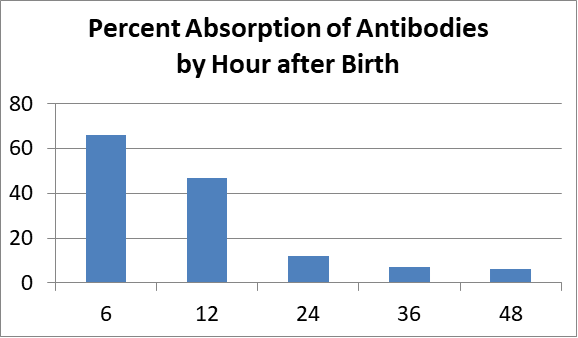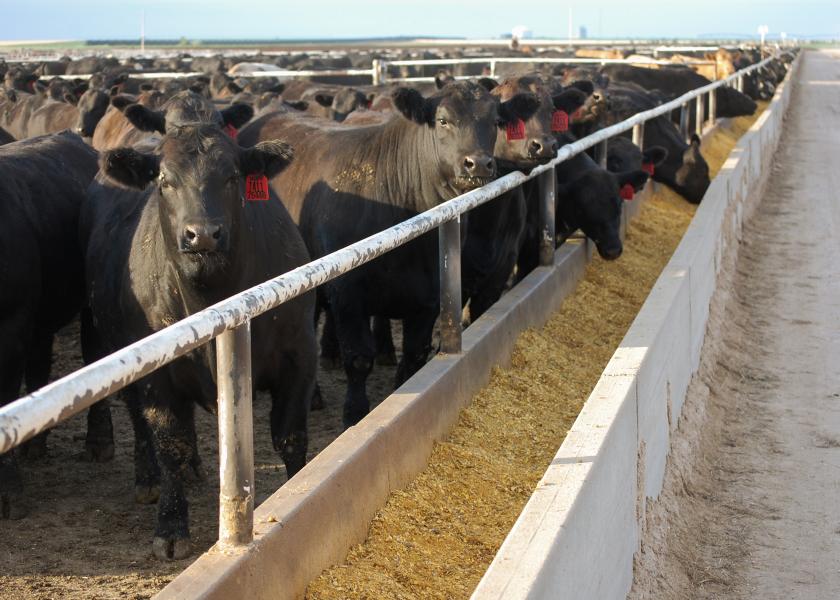
The world-class facility will position Texas — and the United States —
as a globally recognized leader in the processing of sustainable hemp
fiber and hurd for industrial applications. (Maja Dumat, Flickr/Creative
Commons)
DALLAS & WICHITA FALLS, Texas — Dallas-based Panda Biotech has
selected Wichita Falls, Texas, to be the home of the largest and most
state-of-the-art industrial hemp processing center in the United States.
The Panda Texas Plains Hemp GinTM will also be the first
facility in the nation to cottonize hemp fiber on a commercial scale for
the American textile industry and export customers. In addition, Panda
Biotech’s Hemp GinTM is likely the only facility in the world
dedicated to both the processing and cottonization of hemp fiber in
industrial quantities outside of the People’s Republic of China.
The world-class facility will position Texas — and the United States —
as a globally recognized leader in the processing of sustainable hemp
fiber and hurd for industrial applications.
The largest industrial hemp fiber decortication facility in the United States
Panda Biotech has contracted for a 500,000 square foot facility and
surrounding 97-acre campus that was formerly the home of General Motors’
Delphi assembly plant.
The company plans on installing the largest industrial hemp
decorticating, or processing, equipment ever used to separate the outer
bast fiber from the inner woody core, or hurd. Panda Biotech’s top
mechanical engineers worked with a leading international equipment
manufacturer to “super-size” their existing line of decorticators. At
full production, the two 10-ton/hour decorticators are expected to
process close to 300 million pounds of Texas-grown industrial hemp per
year. The fiber will be refined for textile applications, and the hurd
will be processed for a variety of industrial purposes. Panda estimates
the two decortication lines will generate approximately $30,000,000 per
year for Texas farmers.
The first processing line is currently being manufactured and is on
schedule for delivery in Dec. of 2020. Panda Biotech expects its Wichita
Falls facility to commence partial operations in 1Q2021 and both lines
to be fully operational by 1Q2022. Panda will fill contracts with Texas
agricultural producers in the region for the 2021 growing season.
The only U.S. facility dedicated to commercial hemp cottonization
The Panda Texas Plains Hemp GinTM represents a significant
advancement in the domestic supply chain for textile-grade hemp fiber
as it is the first and only facility in the United States dedicated to
both the decortication and degumming, or cottonization, of hemp fiber on
a commercial scale. The “cottonization” process removes the lignin that
binds hemp fibers together in bundles and “opens” them for further
refinement. Once “cottonized,” the hemp fiber is ready to be seamlessly
blended with other natural or man-made fibers — such as cotton, silk,
wool and polyester — and spun into yarns that will be knit or woven into
fabric.
Panda Biotech has successfully cottonized hemp fiber decorticated on
smaller versions of the equipment to be installed later this year on its
Wichita Falls campus. The fiber was subsequently spun into yarn, knit
into fabric, printed, and cut and sewn into fully finished, high-end
apparel.
The company is working with a number of well-known brands to develop
yarn blends in multiple counts, from 8s — 40s, for sustainable and
innovative textiles that will use Panda Biotech’s proprietary
cottonization process. Panda is also in discussions with industry
leaders in the construction and composite sectors for the purchase of
hurd.
At full production, Panda Biotech expects its Wichita Falls facility
to annually produce more than 35 million pounds of apparel-grade,
cottonized hemp fiber suitable for use in a variety of yarns for knit
and woven textiles.
Wichita Falls Selection
Several unnamed cities vied for the opportunity to be the home of the Panda Texas Plains Hemp GinTM facility.
Panda Biotech made the award to Wichita Falls based on an available
outstanding facility, the city’s geographical location, access to highly
experienced Texas producers, an excellent workforce, a low cost of
living and pro-business community. On July 7, the Wichita Falls City
Council unanimously approved an incentive package to attract Panda
Biotech to the city.
“After conducting a state-wide search of potential buildings, in
addition to meeting with officials in various cities, we selected
Wichita Falls as the perfect location for Panda Biotech’s flagship hemp
processing center, said Scott Evans, executive vice president of Panda
Biotech. “The facility we’re moving into boasts 11 acres under roof and
enough land to allow for expansion into strategic, new business
endeavors that Panda is planning.
“In addition to the local agricultural community, city and county
officials have been outstanding to work with and supportive of what they
expect to be a global calling card for Wichita Falls as the hub of the
next multi-billion-dollar industry,” added Evans. “We’re very excited
that this facility will not only help to supply a growing worldwide
demand for industrial hemp fiber, but also help to create a new,
sustainable industry.”
“Panda Biotech’s vision for the industrial hemp industry is
unparalleled, and we’re ready to partner with them to build something
extraordinary,” said Henry Florsheim, president and CEO of the Wichita
Falls Chamber of Commerce. “This project will have a tremendous impact
on our agricultural community and our manufacturing sector at a time
when many communities are struggling with economic development. With
Panda’s efforts and our support, Wichita Falls will become the worldwide
epicenter of industrial hemp research, processing and product
development.”
Panda Biotech Seeds Texas’ Hemp Industry
In the lead up to today’s announcement, Panda Biotech helped to
jumpstart the Texas hemp industry by donating 60 tons of free hemp fiber
seed to Texas agricultural producers in May of this year. Producers
subsequently planted hemp fiber fields in every agricultural region
across Texas. Panda donated the seed to help farmers gain valuable
experience from their first trial crop of industrial hemp including an
understanding of how the hemp seed responded to their local soil and
climate conditions.
Panda Biotech created their seed donation program in close
collaboration with Texas A&M AgriLife Extension. Producers who
voluntarily provide data on their planting and harvest will receive
Panda Biotech’s Research Summary Report that will be prepared by Texas
A&M AgriLife to help ensure the 2021 Texas industrial hemp harvest
reaches its full potential.
The earth’s most sustainable crop
Hemp is widely regarded as the most green and sustainable crop on the
planet. Hemp requires 70% less water than most major crops used in the
manufacture of textiles. In addition, hemp requires very little
herbicides, fungicides or pesticides, and has significant soil
remediation qualities. Industrial hemp agriculture has been
scientifically proven to minimize carbon dioxide (CO2) emissions,
absorbing more CO2 per acre than any forest or commercial crop.
Benefits of industrial hemp fiber and hurd
Industrial hemp used for manufacturing applications is highly valued
for its natural durability and environmental sustainability. The
processed fiber, hurd and cellulose from industrial hemp can be used in
the production of a multitude of products including textiles, a wide
array of building materials, paper products, automotive components,
nanomaterials, composites and bioplastics. In addition, research
indicates that hemp-based supercapacitors offer a less expensive
alternative to materials currently used in rechargeable batteries for
applications such as smartphones and electric cars. As a result,
industrial hemp is poised to transform numerous multi-billion-dollar
industries.
Formation and growth of the industrial hemp industry
The U.S. hemp industry was made possible due to the passage of
the federal Hemp Farming Act of 2018. Panda Biotech was subsequently
formed after the provisions of the Act were incorporated in the 2018
U.S. Farm Bill that was signed into law by President Trump on Dec. 20,
2018. Both chambers of the Texas state legislature unanimously passed
House Bill 1325, that was signed into law on June 10, 2019, by Texas
Governor Greg Abbott. On January 27, 2020, the USDA approved Texas’ hemp
regulations. The Texas Department of Agriculture began issuing licenses
for the growing, handling and processing of hemp on March 16, 2020. The
law ensures Texas farmers are able to participate in a rapidly growing
industry with a new viable crop option that should be a boon to rural
economies.
The global industrial hemp market has been projected to grow from
$4.6 billion in 2019 to $26.6 billion by 2025 driven largely by
eco-conscious consumers who increasingly require environmentally
friendly products and services.
About Panda Biotech
Based in Dallas, Texas, Panda Biotech, LLC is a first mover in the
emerging U.S. hemp fiber industry for high-end apparel and hurd for
numerous industrial applications. The company is currently developing
large-scale, industrial Hemp GinTM facilities.
Panda Biotech’s executive leadership has extensive experience
developing, financing, constructing and operating large-scale industrial
facilities including natural gas, solar, hydroelectric and biomass
energy projects. They have developed 22 projects since 1982 representing
more than $12 billion in invested capital. Additional information on
Panda Biotech can be found at www.pandabiotech.com. Follow us on Instagram, Twitter and LinkedIn.
–Panda Biotech








